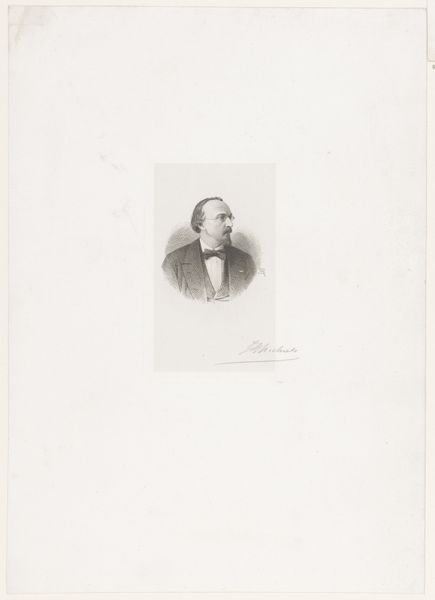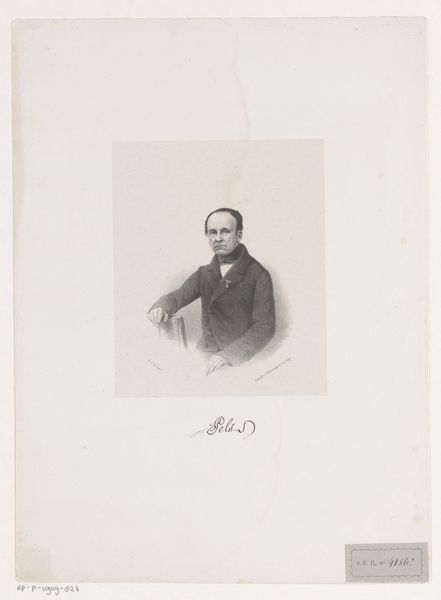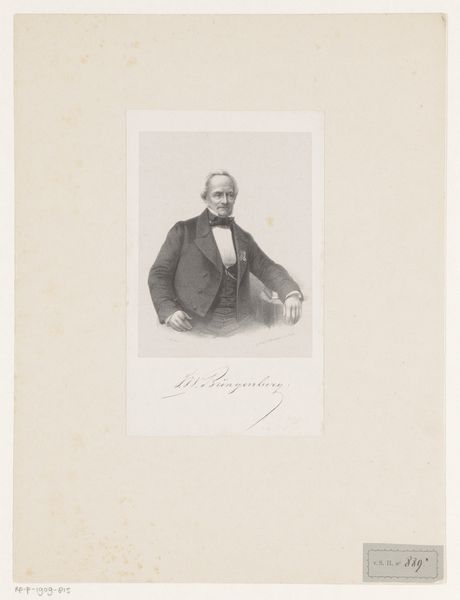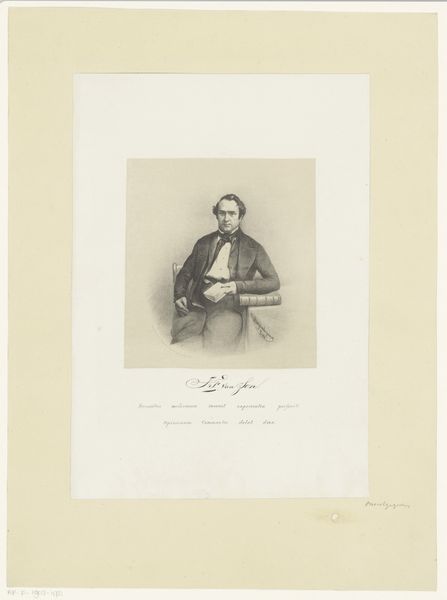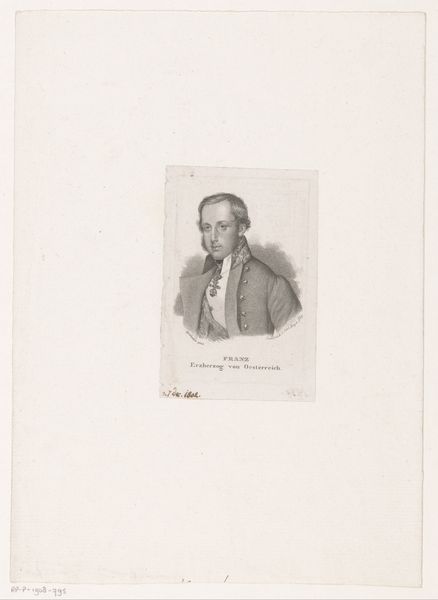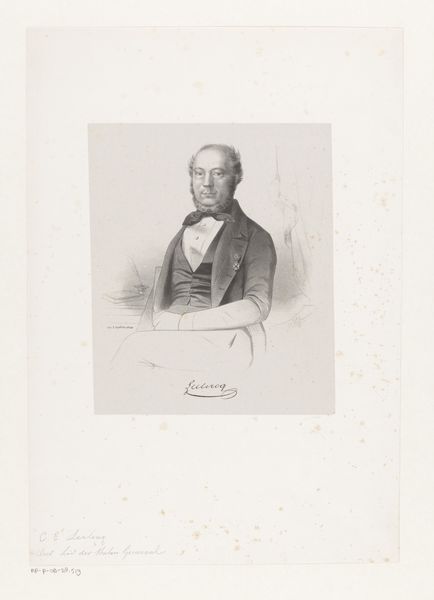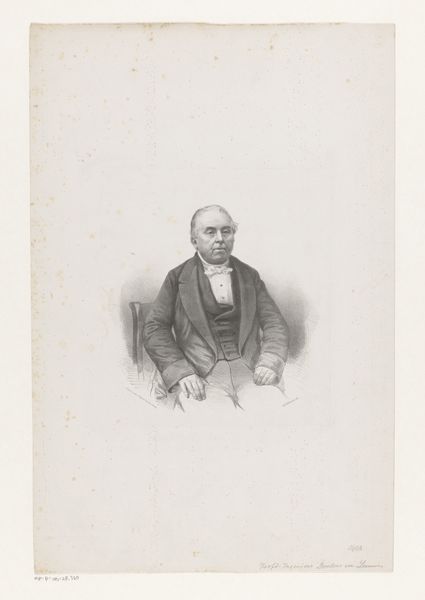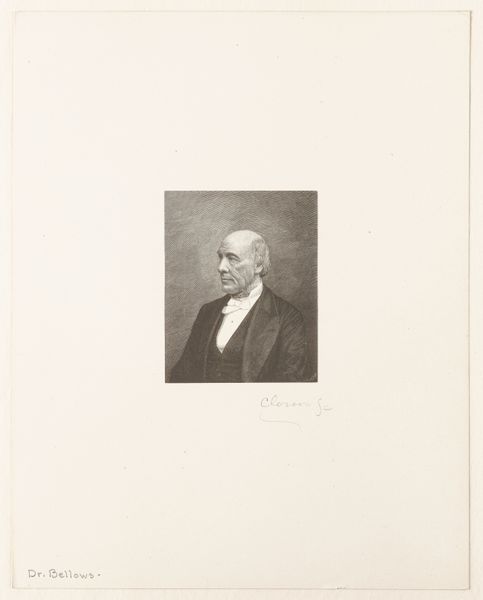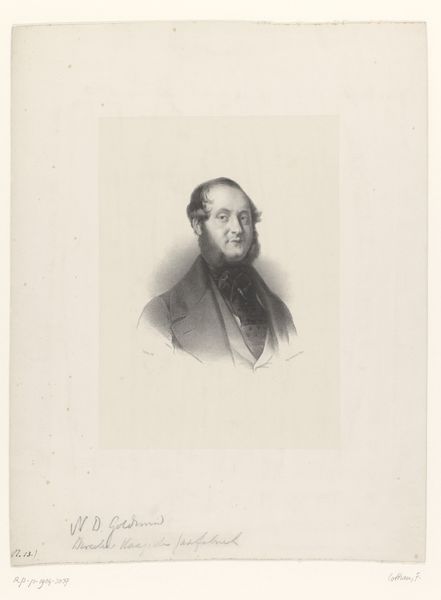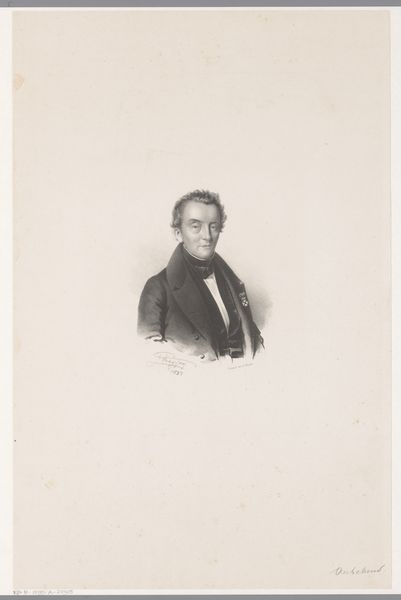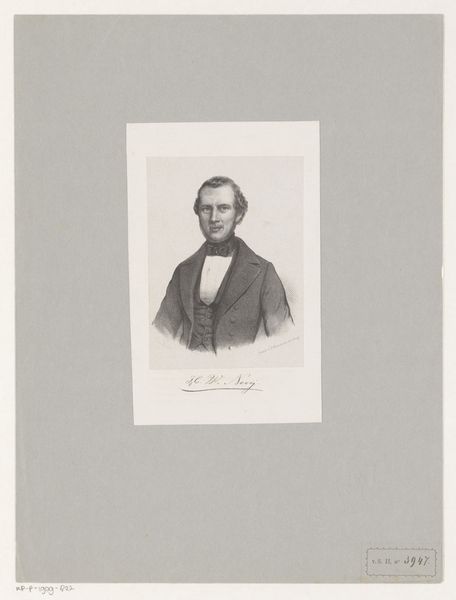
drawing, pencil
#
portrait
#
drawing
#
pencil
#
genre-painting
#
academic-art
#
realism
Dimensions: height 340 mm, width 250 mm
Copyright: Rijks Museum: Open Domain
Curator: Before us is "Portret van Louis Christiaan van Goudoever," a pencil drawing executed in 1858 by Pieter Wilhelmus van de Weijer, currently residing here at the Rijksmuseum. Editor: It's a rather austere portrait, isn't it? The muted tones of the pencil create a sense of quiet dignity, but also… distance. Almost melancholy. Curator: Yes, it embodies a certain gravitas typical of academic art portraiture of that period. Van Goudoever, likely a man of considerable social standing, is presented in formal attire, suggesting a position of authority or profession requiring such formal dress. Think law, academia. Editor: The robe and that striking white collar do conjure images of jurisprudence or professorship, conveying intellectual prowess. The eyes are interesting; shadowed, but holding the viewer's gaze directly, projecting self-assurance mixed with world-weariness. Curator: Absolutely. Portraits during the 19th century often functioned as public declarations of status and lineage. It would be intriguing to uncover who commissioned the piece, what its intended purpose was within Van Goudoever's personal or professional sphere, and who saw it? It all contributed to an intentional narrative. Editor: It is a statement of legacy then. The drawing's somber palette amplifies that sense of enduring presence. We find these types of images take on meaning beyond the subject, coming to represent stoicism, experience and reflection. How was academic art seen at that time? Curator: Academic art had quite a position of influence; often favored by institutions and governing bodies, its aim was to promote certain social values and ideas of national identity and so, it's important to view artwork in its socio-political moment. This drawing clearly embodies the aesthetics and ideologies prevalent at that time. Editor: Seeing his legacy now as you point it out adds such layers of perception! I began only looking at his visual composure, missing how his portrait would function for a collective, as well as its initial commissioner. Curator: Indeed, viewing a work of art requires not just an analysis of style or the depiction of iconography, but consideration for what images DO in their historical context. Editor: It makes you think about how a drawing like this becomes so much more complex when considering historical reception. Thank you!
Comments
No comments
Be the first to comment and join the conversation on the ultimate creative platform.
